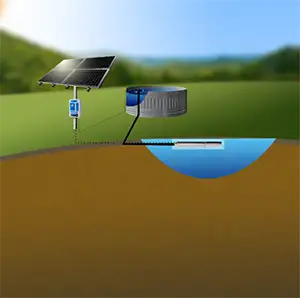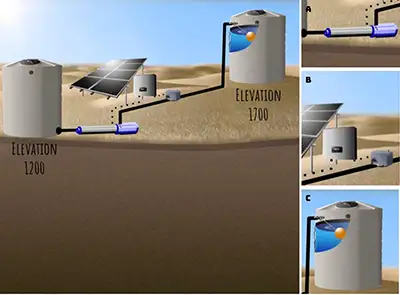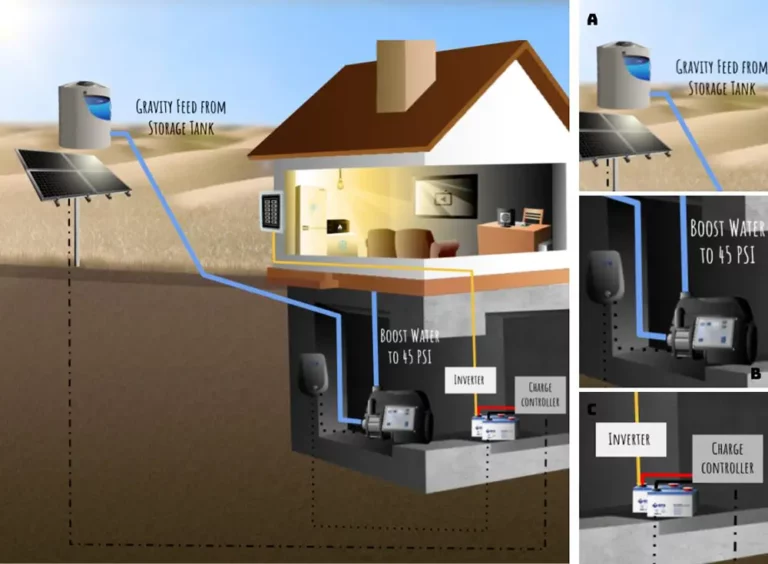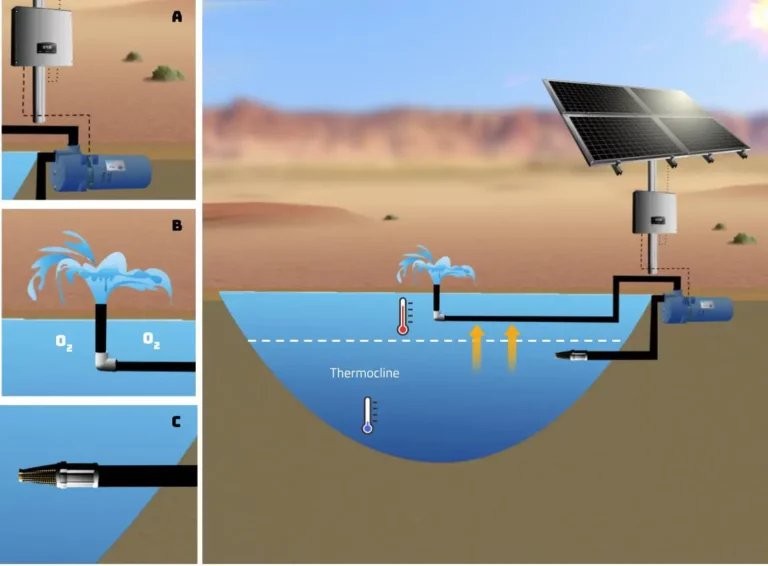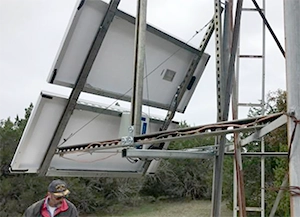Overflowing Spring to Sunken Cistern, to Storage Tank with Pressure Shut Off Using Surface Pump
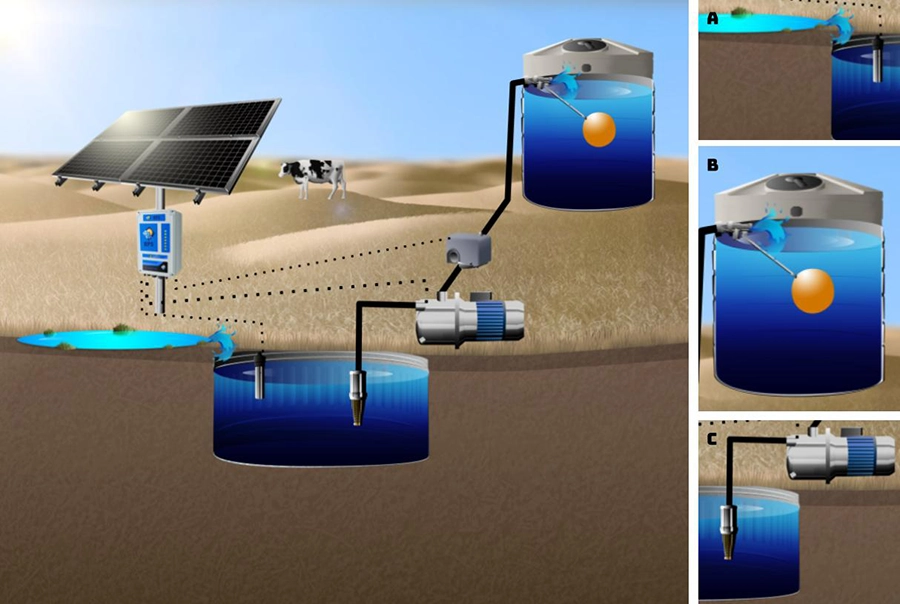
Low producing springs (A) are useful sources of water, but might need a little help collecting enough to pump. If your spring spills out onto the ground, flowing away downhill, we suggest burying a tank next to the well (B). The tank will collect water at night, meaning you’ll have a large store of water in the morning.
When a submersible pump isn’t quite right for the job, a popular alternative utilizes a surface transfer pump that pulls water out of a spring box, pond, shallow well or cistern using a foot valve (C).
You can then pump water to a variety of next steps like a stock tank, pressure tank, direct to drip lines, hoses, even unique setups like waterslides or fish cleaning stations. In this example, water is pumped to a faraway storage tank. Usually, we use a wet/dry tank full sensor wired directly to the control box. And there is a wet/dry sensor acting as a low water sensor just above the foot valve (A). But since the tank is a few hundred feet away, and no one want to trench wire that far, a pressure shut off system is used. Pressure shut off systems are comprised of the following plumbing pieces….
A reverse action pressure switch dropped into the pipeline to sense changes in pressure from the mechanical float valve. The reverse action pressure switch is still hardwired into the charge controller (shown underneath the solar panels), but is placed closer to the pump and therefore uses substantially less wire than a wet/dry sensor.
A mechanical float valve (B). If the tank fills up, the float rises and closes the pipeline, spiking line pressure and the reverse action pressure switch sends a small electrical pulse to the charge controller to turn the pump off. If the tank is emptying, the mechanical float drops to open the pipeline, line pressure releases and the reverse action pressure switch turns the pump on.

